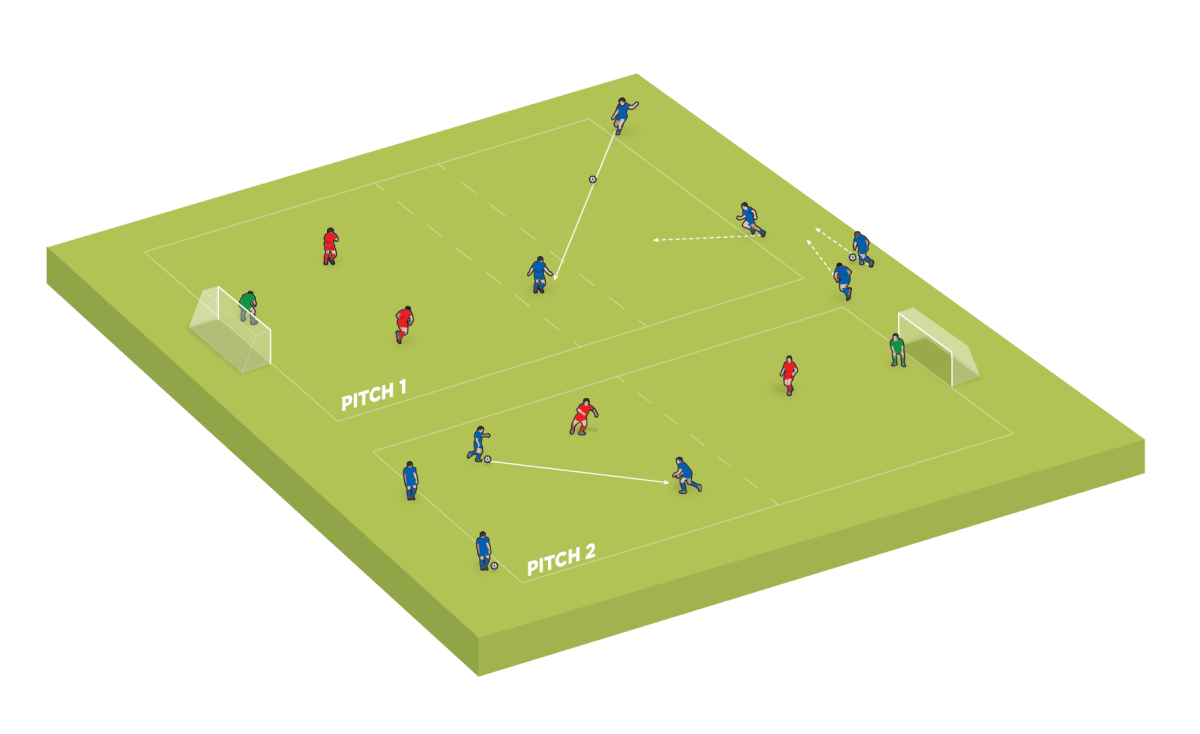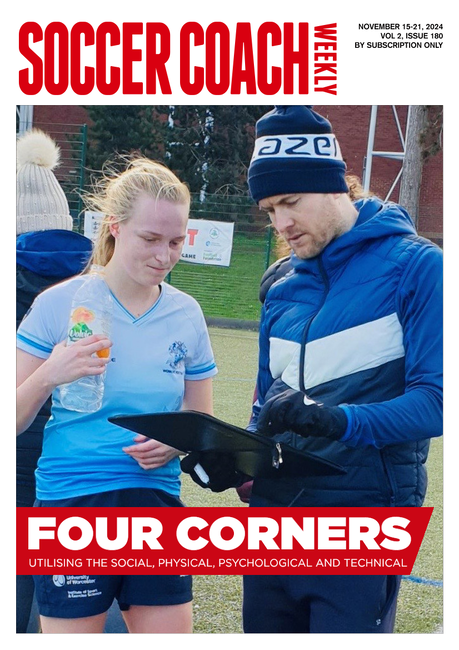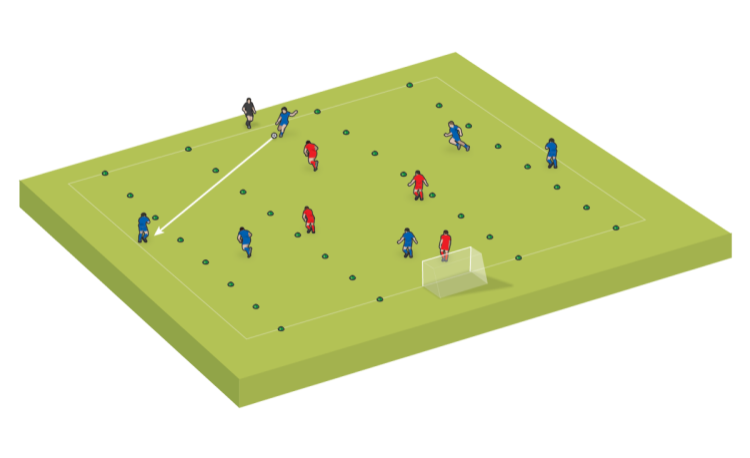Adapting practices when space is tight
It is a common issue facing many coaches – how do you make the most of your sessions if space is at a premium? The key is in the planning
Quite often, the environment in which we train can be quite restricted in terms of the space available to us.
With other teams training at the same time, we can find ourselves limited to a third or even just a quarter of a pitch. As playing squads increase in both age and numbers, space is at even more of a premium.
So to help reduce the impact that working within a confined space can have on the effectiveness of a session, and the engagement of the players, particular practice designs can be used.
The three team practices in this article allow all of the players to be involved, while also reducing the number of players that are actually active within the space.
Practice 1 (pictured below) shows a possession game where two teams are looking to complete a set number of passes before they can pass into a small goal to win a point.
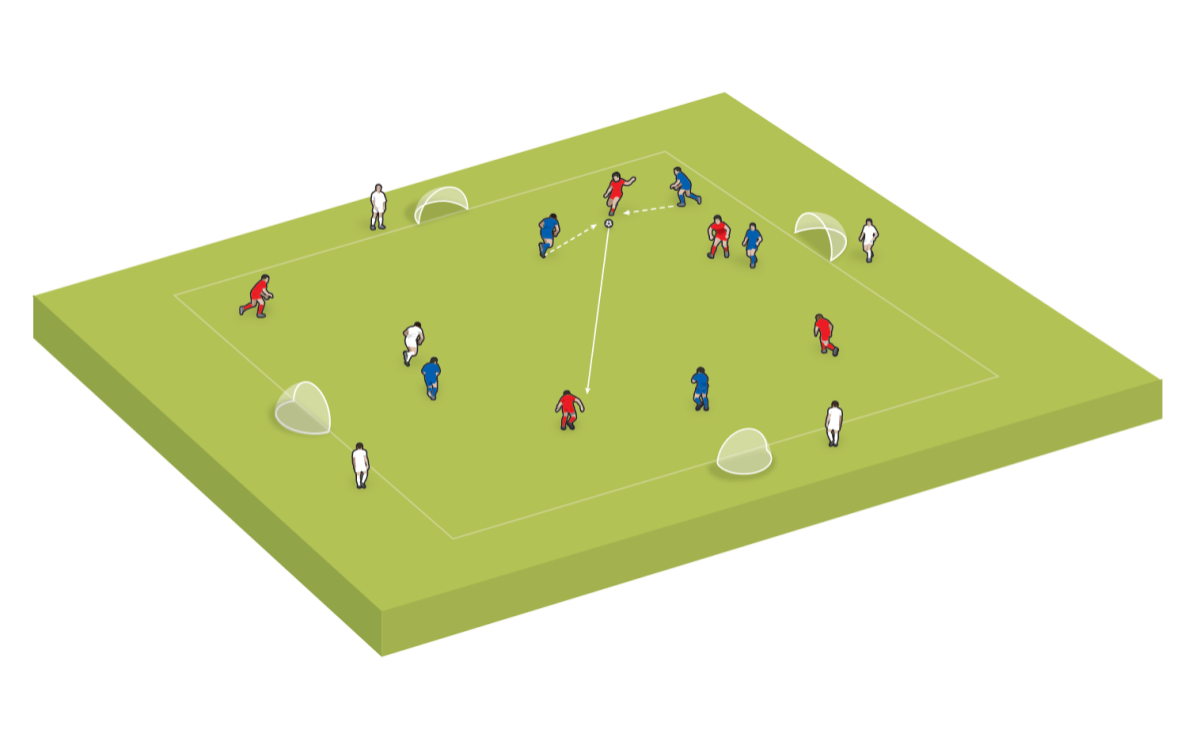
The third team act as support players on the outside (one can also be placed inside the area), to help the team in possession retain the ball. Once a team has scored a point, the team acting as support players swaps roles with the team that lost.
Another option is to use a circuit set-up, as in practice 2 (below), where the players move round two finishing practices.
Pitch 1: The pair start by passing to a forward, who can receive unchallenged in a central channel, before they enter the pitch to make a 3v2
Pitch 2: The pair dribble onto the pitch where there is a defender locked into each half
Related Files
In this example, some players stay on the pitch they have been allocated to and act as either a defender or an additional attacker.
The remaining players work in pairs and continuously move around the circuit, completing one practice and then moving straight onto the next one.
The roles of the players should be rotated regularly and the two pictures need to provide the players with different scenarios.
This type of set-up can also be used for 1v1 practices and topics such as counter attacking.
The final option, practice three (shown below), requires two coaches and involves having a small technical practice that links into the main practice.
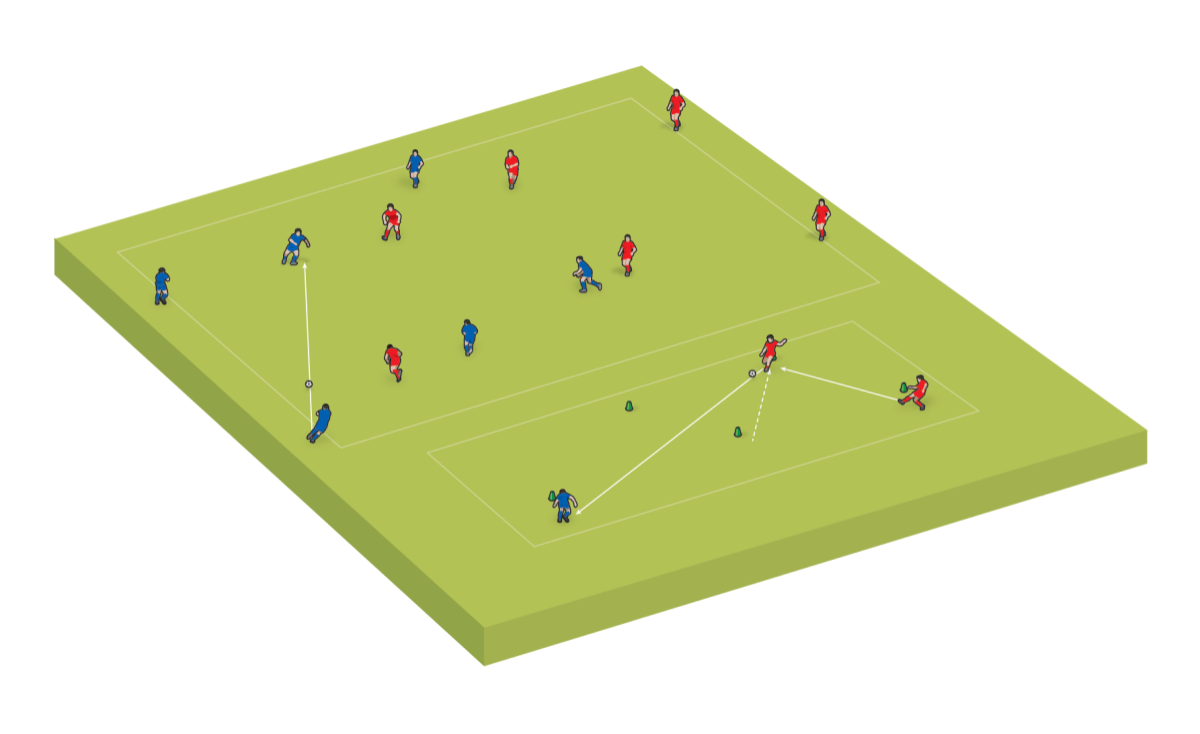
In the example provided, the focus of the main practice is receiving to play forward - so in the small technical practice, the players are rehearsing the actions they need to complete that will allow them to receive the ball and then either pass or travel forward.
Whichever coach is taking care of the technical practice takes a small group of players at a time and then provides them with the key technical detail needed to complete the action on which they are focusing.
After a small amount of time, the group of players returns to the main practice and is replaced by another group.
Though only having a small space at training can no doubt be challenging and frustrating for both you and your players, it can also be an opportunity to experiment with some types of practice you may not usually use.
The key, as with any session, is in the planning.
Newsletter Sign Up
Coaches Testimonials

Gerald Kearney, Downtown Las Vegas Soccer Club

Paul Butler, Florida, USA

Rick Shields, Springboro, USA

Tony Green, Pierrefonds Titans, Quebec, Canada
Subscribe Today
Discover the simple way to become a more effective, more successful soccer coach
In a recent survey 89% of subscribers said Soccer Coach Weekly makes them more confident, 91% said Soccer Coach Weekly makes them a more effective coach and 93% said Soccer Coach Weekly makes them more inspired.
*includes 3 coaching manuals
Get Weekly Inspiration
All the latest techniques and approaches
Soccer Coach Weekly offers proven and easy to use soccer drills, coaching sessions, practice plans, small-sided games, warm-ups, training tips and advice.
We've been at the cutting edge of soccer coaching since we launched in 2007, creating resources for the grassroots youth coach, following best practice from around the world and insights from the professional game.
